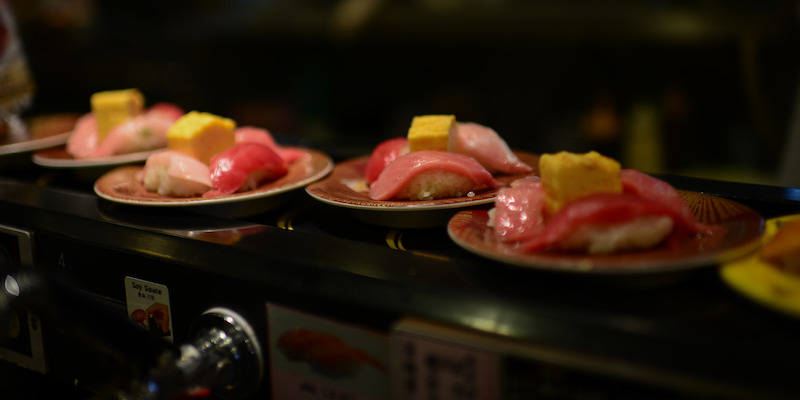In Japan the hygiene of the conveyor belts is being discussed which in many sushi restaurants circulate saucers of raw fish and rice so that customers can choose the ones that most appeal to them. The debate was sparked by a video released on social networks in which a boy is seen licking his fingers and then touching the food transported by one of these tapes, with the clear intention of spiteing the other people in the restaurant. In the same video, the boy licks the mouth of a bottle of soy sauce, one of those shared by restaurant tables, and a bowl among those available to diners.
[Sad news]A new challenger appears in the conveyor belt sushi flame neighborhood
This time, I licked the soy sauce sashimi and teacup with Sushiro and touched the rotating sushi with saliva. pic.twitter.com/RMUk3caZQE— Gareso Takizawa 🪚 (@takigare3) January 29, 2023
The video was widely circulated, led to some emulations, always witnessed online, and re-emerged old videos with similar unsanitary behavior. In these, spoons were licked, while the small plates of sushi on the conveyor belt were ruined with a large dose of wasabi, the green and spicy paste that in Japan is combined with raw fish – in moderation. There was talk of “sushi terrorism” on Japanese social networks and many commentators said they were worried that these episodes could question the trust of the Japanese in the hygiene of the restaurant chains involved.
The first video, taken in a restaurant of the Sushiro chain in the city of Gifu, has been viewed over 40 million times and the managers of the company concerned have denounced the boy, despite the fact that he had publicly apologized. In the days immediately following the publication of the video, Sushiro lost 5 percent of its value on the stock exchange: the drop was then recovered, but the question could affect future results, especially in a country with high attention to the level of hygiene such as the Japan.
The restaurant chains concerned have taken immediate countermeasures: now in most restaurants cutlery, bowls and bottles of soy sauce are no longer available to everyone, but must be brought by the waiters or picked up independently. Sushiro has at least temporarily suspended the distribution of unordered items on conveyor belts, replacing them with photos of the sushi that show what can be ordered. Kura Sushi, another chain affected by the jokes that ended up online, has instead decided to use CCTV cameras to check that dishes have not been tampered with. As early as 2019, their tapes were monitored by cameras that use artificial intelligence to count the dishes taken by customers and evaluate their tastes and choices. Other restaurants have long placed the dishes on the tape covered.
But there are those, such as public television NHKhas questioned the very future of conveyor belts in restaurants: they have experienced seasons of great success, they have been a hallmark of a part of Japanese catering, but they have also undergone cyclical crises in popularity.
The invention of the conveyor belt in sushi shops is attributed to Yoshiaki Shiraishi, a small restaurant owner who was dissatisfied with the management of space in his establishment. The idea of using a conveyor belt came to Shiraishi while observing an Asahi beer production line, where bottles were moved quickly to be filled. It took him five years to perfect his invention, designing from scratch a system that would allow the tape to take tortuous paths at a constant speed. He finally installed his invention in Higashiosaka’s restaurant in 1958, then sold it to over 250 restaurants in the following years in different parts of Japan.
Shiraishi’s idea was then imitated and further improved, becoming a distinctive element of many sushi places around the world. Initially the premises were organized in such a way as to have a long counter on which the dishes were transported: the customers sat on the stools facing the conveyor belt and therefore could not see each other, which did not have much appeal for those who wanted have a group meal. Later, tables perpendicular to the conveyor belt were added to make the experience more convivial. This solution also had the advantage of making the tape accessible to more people, and thus increasing the number of customers.
A table arrangement of this type is that of the Gifu restaurant where the first video was shot: according to many commentators, one of the causes of the sabotage is also the excessive automation and the reduction of the staff present.
– Read also: Wasabi crops are not doing well
